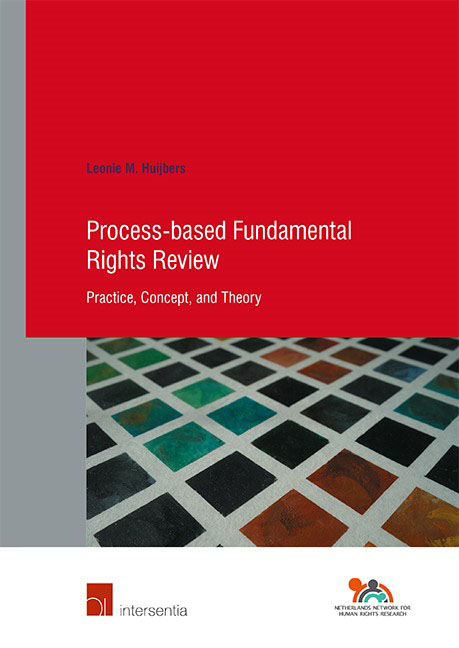Book contents
- Frontmatter
- Acknowledgments
- Contents
- List of Abbreviations
- INTRODUCTION
- PART I THE PRACTICE OF PROCESS-BASED FUNDAMENTAL RIGHTS REVIEW
- PART II THE CONCEPT OF PROCESS-BASED FUNDAMENTAL RIGHTS REVIEW
- PART III THE THEORY ON PROCESS-BASED FUNDAMENTAL RIGHTS REVIEW
- CONCLUSION
- Addendum: Questions for ECtHR Judges
- Summary
- Samenvatting
- Bibliography
- Official Documents
- Case-Law (by Jurisdiction)
- Case-Law (by Name)
- Curriculum vitae
- Human Rights Research Series
- Index
Chapter 5 - Conceptualising Process-based Fundamental Rights Review
Published online by Cambridge University Press: 11 November 2021
- Frontmatter
- Acknowledgments
- Contents
- List of Abbreviations
- INTRODUCTION
- PART I THE PRACTICE OF PROCESS-BASED FUNDAMENTAL RIGHTS REVIEW
- PART II THE CONCEPT OF PROCESS-BASED FUNDAMENTAL RIGHTS REVIEW
- PART III THE THEORY ON PROCESS-BASED FUNDAMENTAL RIGHTS REVIEW
- CONCLUSION
- Addendum: Questions for ECtHR Judges
- Summary
- Samenvatting
- Bibliography
- Official Documents
- Case-Law (by Jurisdiction)
- Case-Law (by Name)
- Curriculum vitae
- Human Rights Research Series
- Index
Summary
INTRODUCTION
Various examples of process-based fundamental rights review were addressed in Part I of this book. It has become clear that there is a broad diversity between these cases. This leaves the question open as to what process-based review entails exactly. Despite all the differences, what makes each of these judgments an example of procedural reasoning in fundamental rights cases? This chapter provides an answer to this question and, in so doing, aims to conceptualise process-based fundamental rights review in a general and context-independent manner that accommodates the various ways procedural reasoning is being used in practice. The overarching definition of processbased review can be seen as a first step towards cross-fertilisation of insights and arguments on procedural reasoning from one legal context to another.
To these ends, Section 5.2 develops common definitions of both process-based review and process-based fundamental rights review (Section 5.2.3). It does so on the basis of various definitions provided in the literature on procedural reasoning and related phenomena (Section 5.2.1) and on the basis of an analysis of the similarities and differences of the examples of process-based review from Part I (Section 5.2.2). To fully grasp the concept of process-based fundamental rights review, Section 5.3 discusses two particular elements of this method of review. First, it discusses the different levels of case-law analysis of fundamental rights judgments (Section 5.3.1). In addition, it explains how process-based review and substance-based r eview are connected. In that regard it discusses the process-substance dichotomy that is central to the topic of process-based review (Section 5.3.2) and it argues that procedural reasoning and substantive reasoning can best be understood as existing on a spectrum of judicial review. A short conclusion in Section 5.4 wraps up this chapter.
DEFINING P ROCESS-BASED FUNDAMENTAL RIGHTS REVIEW
In order to define process-based fundamental rights review in a general and contextindependent way, Section 5.2.1 discusses definitions provided in the literature of procedural reasoning in fundamental rights adjudication. Building on Part I, Section 5.2.2 then deduces several similarities and differences between the examples of processbased review discussed there. Against the background of the existing definitions and the elements derived from the procedural examples, Section 5.2.3 draws common definitions of what is called ‘ process-based review’ and ‘ process-based fundamental rights review’.
- Type
- Chapter
- Information
- Process-based Fundamental Rights ReviewPractice, Concept, and Theory, pp. 93 - 116Publisher: IntersentiaPrint publication year: 2021

